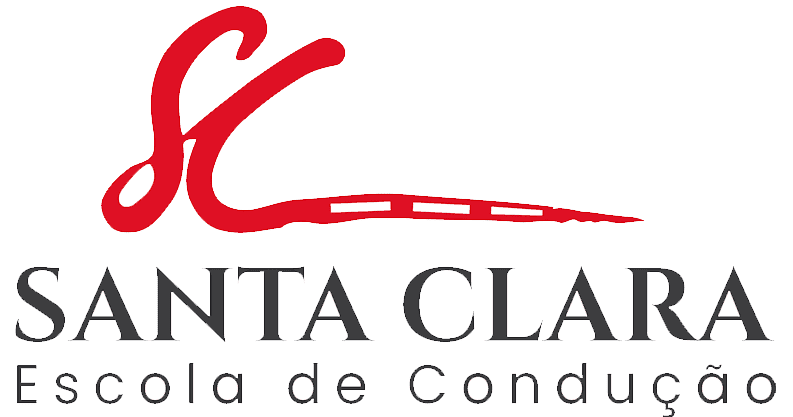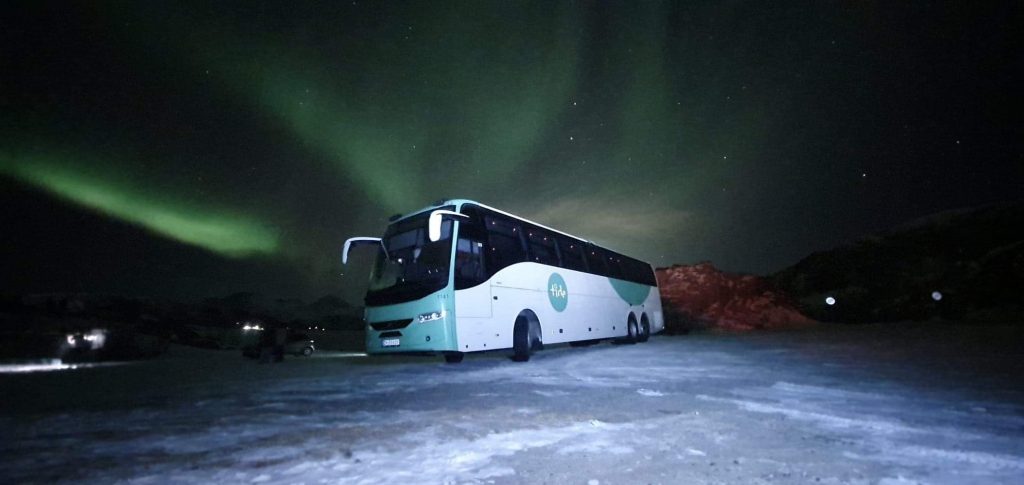Luís Paulo Ferreira Lopes is a former student of ours who took the Passenger Vehicle license in May 2018, is from Seixal, is 32 years old, and has a degree in Marine Biology from the University of the Azores. He agreed to give his feedback on his experience as a Professional Bus Driver, an area where he currently works, outside Portugal, more specifically, in the city of Tromsø, Norway. Tromsø is the largest city in Northern Norway, with about 69,116 inhabitants (2012 census). Occupies the post of the 8th largest city in Norway by population and is also an important city on the Norwegian tourist circuit, being one of the best cities to see the Aurora Borealis.
Luís crossed Europe with his Biologist training to work in tourism, he also ended up working with this phenomenon of Aurora Borealis.
These professional experiences culminated in becoming a Professional Bus Driver.
What I intend with this article is to make known the experience lived by Luís Lopes at our school and how it took him to the point where he is, that is, being Bus Driver in one of the most difficult cities to drive in Norway.
1) What made you choose being a Professional Bus Driver?
It was the circumstances, I worked in Tromso in tourism, as a guide for Aurora Borealis. As tourism is seasonal, I began to notice that people who worked driving buses had a more stable job. That a career as a professional driver would be the most appropriate path in the tourism sector, to have the much-desired job stability. The pandemic has made it possible to complete all the training necessary to acquire the Certification (CAM) to be able to be a real Bus Driver.
2) What do you like most about this job?
I like to drive, I always liked to drive. I had previously been a driver of 9-seater vans on tourist trips and was a skipper / boat driver. Driving has always been part of my career. And to have more professional stability, to increase my salary and have better working conditions, because it is a job that is regulated by unions and rules. I also like working with people, I have a 15-year career working in tourism, it was a way to be able to work with the public and to have a practical job and, thus, be able to satisfy all my desires quickly.
3) Why did you choose our school?
I knew that the school’s instructor had been the only one for a long-time teaching how to drive a passenger’s vehicle in the Azores. I knew that he was a very competent person, which happened when I took my course and I was pleased that the words and everything they had said about the instructor had come true.
4) In addition to the reasons you presented above, did you also consider the speed of getting the license?
Yes, speed helped a lot, since I had a specific period to write the letter.
4.1) Did it meet your expectations?
Yes.
4.2) Did you choose our service because someone you know advised you to go to our school?
Yes
5) In which area precisely do you work:
Tourism and Transport of Urban Passengers.
6) What is the name of the company you work for?
-Tide Buss AS and is a private company.
7) Did you have any practice driving a bus before working as a driver in Tromsø, after getting your Passenger’s Vehicle license?
I didn’t drive in terms of work for any company, but to work in a public company, I felt the need to take the CAM in Norway, which is called Yrkersjåførkompetance (YSK). There, I had to do some practical classes and a theoretical exam to obtain the Norwegian CAM certificate, which was not easy due to the language barrier.
8) What are the main differences and “shocks” between driving in São Miguel/Azores and in Tromso?
There are similarities and many differences. I drive a 15-meter-long bus, a larger model than the one at the Santa Clara Driving School and there I had to pay special attention to distances and streets. One thing that helped getting the license in São Miguel, was the fact that here in Tromso there are many narrow streets, many tight curves and many situations that we have to have an exceptional attention, attention with people on the road, with road, “correct” ways to enter certain intersections, in certain curves… Getting the license in São Miguel helped a lot, because there are also many areas that are complicated and special in terms of maneuvering.
The big difference is that in Tromso there is ice from mid-September to June, moreover, it can start to snow in September and we have snow in the lower parts of the city, until at least May, and there is always the possibility of snowfall throughout the year, some months more and others less. A necessary thing, here in Tromso, when driving was to learn how to deal with the winter, and there are some tools, which because of the weather, exist on buses in Norway that do not exist in Portugal. We have a tool that we use on the bus which is basically a sandbox that releases gravel onto the road on demand. We have some buttons that we click as necessary, to put sand in areas where there is ice and this gravel helps our tires that have spikes to rise. Also, it is necessary for those who work in Norway to have good control and a good ability to interpret the road and know if it is necessary to use chains or not, because during various periods of winter chains are needed, and if the chains are not on buses, we can have serious problems in the ice zone. There are big complications when a bus gets stuck in a street that, unfortunately, the bus couldn’t go up and it becomes very complicated because the city has key points, and if a bus gets stuck in these areas there are many city lines that are affected. This is why there are many situations in which chains are necessary.
9) Do you think that the Passenger’s Vehicles Driving classes at our school prepared you for these differences? If what you learned allows you to maneuver a bus anywhere?
Yes.
10) Why?
Above all, as a Bus Driver, what I learned at the Driving School was how to deal with the weight of the bus, how to interpret the right speed, how to use the bus’s electric brake, how to approach curves, etc. … Making maneuvers such as, looking at the traffic, interpreting when we are operating the bus, if it is preferable to let a car pass to have more space, if not, and how to take possession of the road. All these concepts learned at the Driving School were important for me to be successful driving in Tromso.
11) What was the biggest lesson that remained from the Mechanics and/or the Passenger’s Vehicles Driving classes?
“O sempre a fazer foicel” ( eu não sei o que é que isto quer dizer.. porque isso não consigo traduzir) and the 5 rules before starting to make an exit from the stop. The 1, 2, 3, 4, 5 is something I still do today. It is important to do this at the beginning because there are 5 rules that we always do at each stop. Turning the outside mirror, the inside mirror, closing the door, blinking, closing the door and looking in the mirror on the left side of the bus, we have to do this all the time, there is not a single time we can start without doing it, because the consequence may be running over someone or hitting a car.
12) What did you like most about the Mechanics and Bus Driving classes?
I liked everything I learned from Mr. Cabral and although Mr. Cabral is a very demanding person and, for some people, this can be difficult to deal with. For me personally it is not, because I really think that someone who has a job of such responsibility, has to understand that the instruction they are taking is an asset. I personally appreciated the demand that Mr. Cabral had for all of us, and the insistence makes us remember the rules and everything related to instruction.
13) What makes Santa Clara Driving School different from other schools?
Mr. Cabral’s insistence and persistence are truly unique, the fact that he is incisive and thorough with the “things” that we have to pay attention to every day on the road. And I didn’t feel that here in Norway, because it was a little bit, “Screw it!” When I started driving on ice it was a bit complicated, because there were “things” that Mr. Cabral could not prepare us for, there is no ice or snow in São Miguel. He can simply give some advice, but only driving on ice that you learn how to drive on ice and I, fortunately, had some colleagues here who helped me, who were good colleagues. They gave me tips: “If in doubt, put the chains on, sand in the boxes because it always comes in handy! And the police here are not forgiving either, so this helps.
14) Is there anything you want to add about your Driving School experience that hasn’t been revealed yet?
What I have to add is that when Mr. Cabral retires, he has to make a book, a memoir! Because whoever comes after him will certainly be an asset, because there is knowledge he has that is timeless. As long as there are people driving heavy vehicles, all of Mr. Cabral’s teachings are an asset and I think he can certainly provide a good instruction for instructors.
15) Do you think that our training contributed to becoming a better Professional?
Yes.
We are very grateful to Luís Lopes for his availability, time spent and for sharing his testimony. Thank you, Luis!




